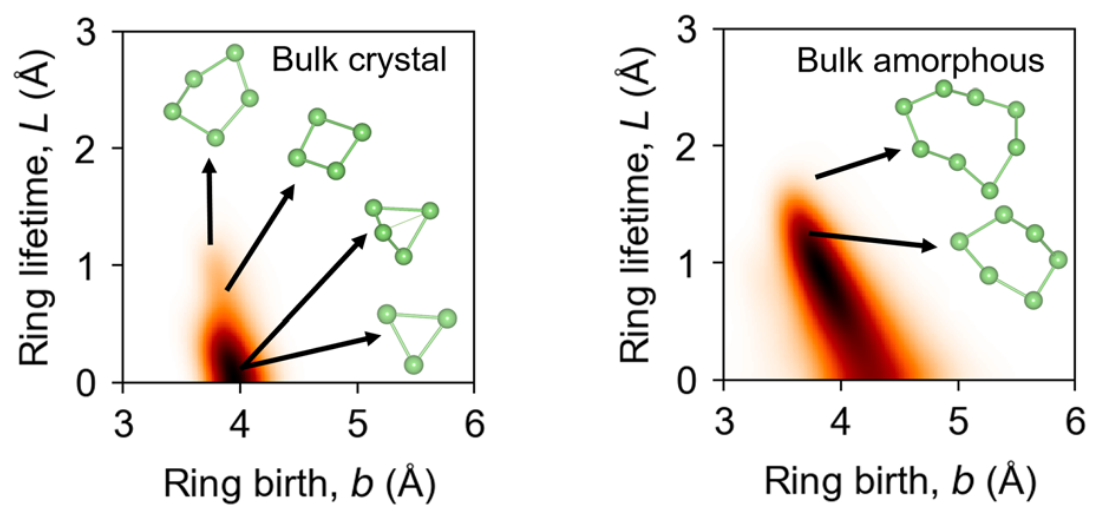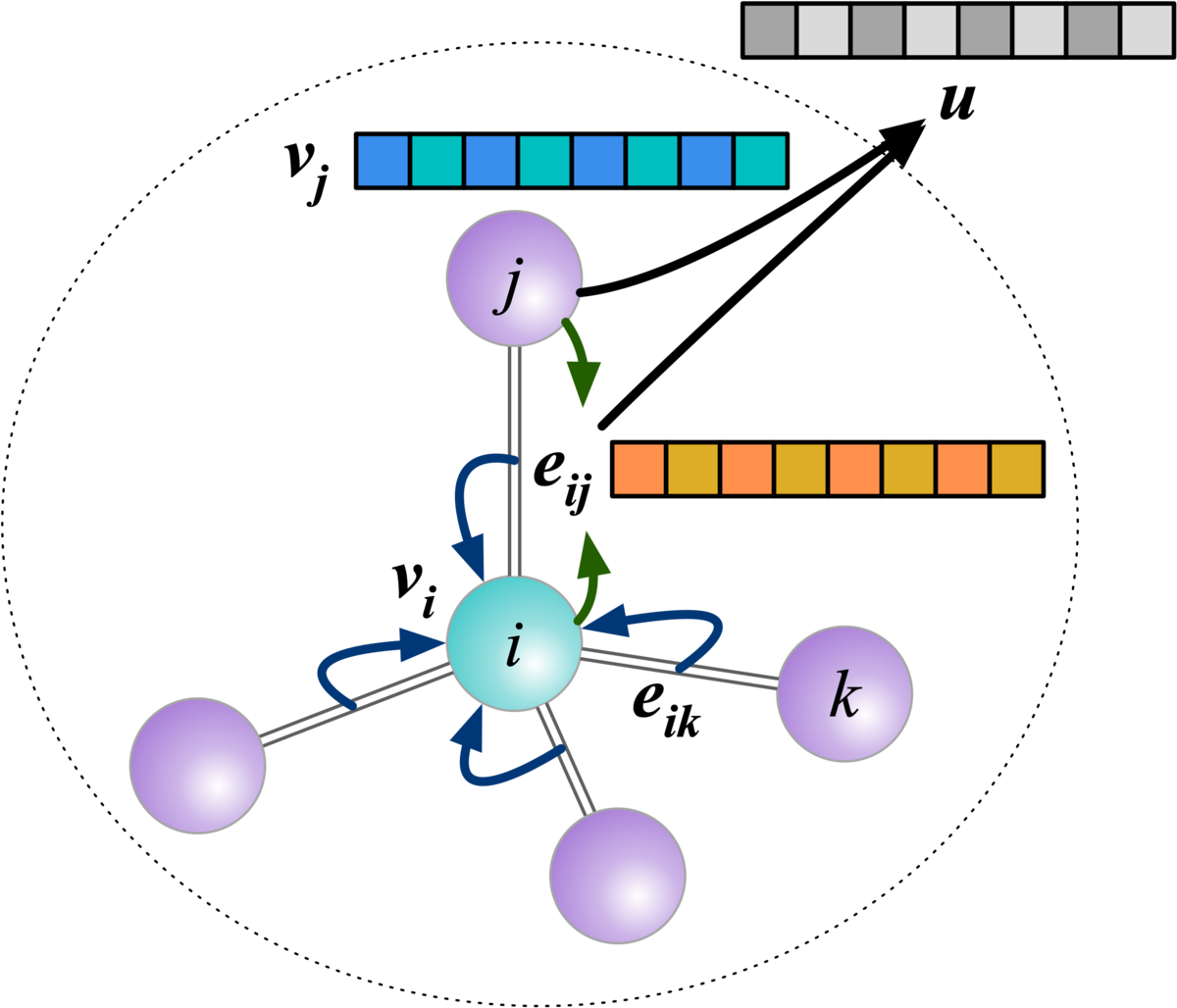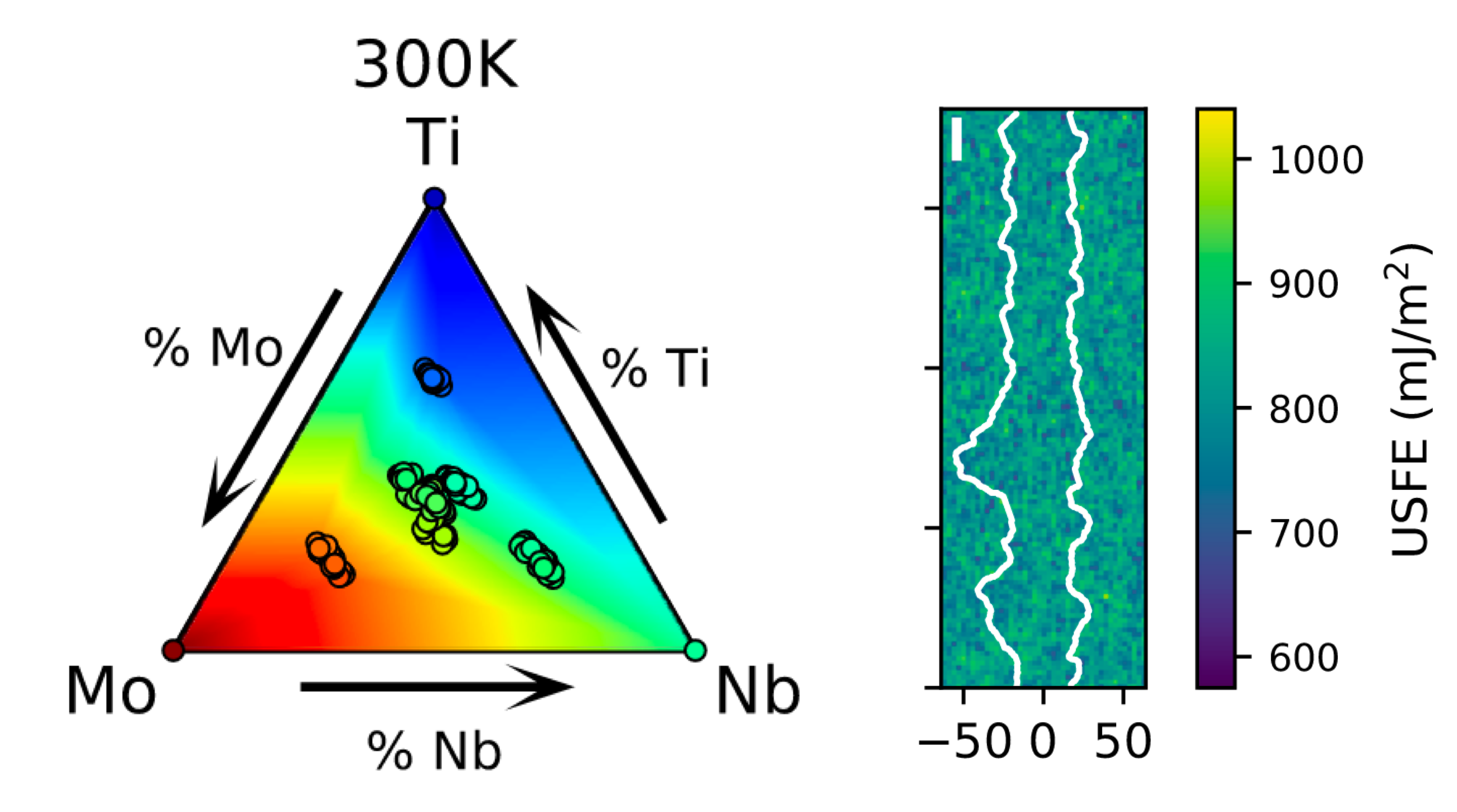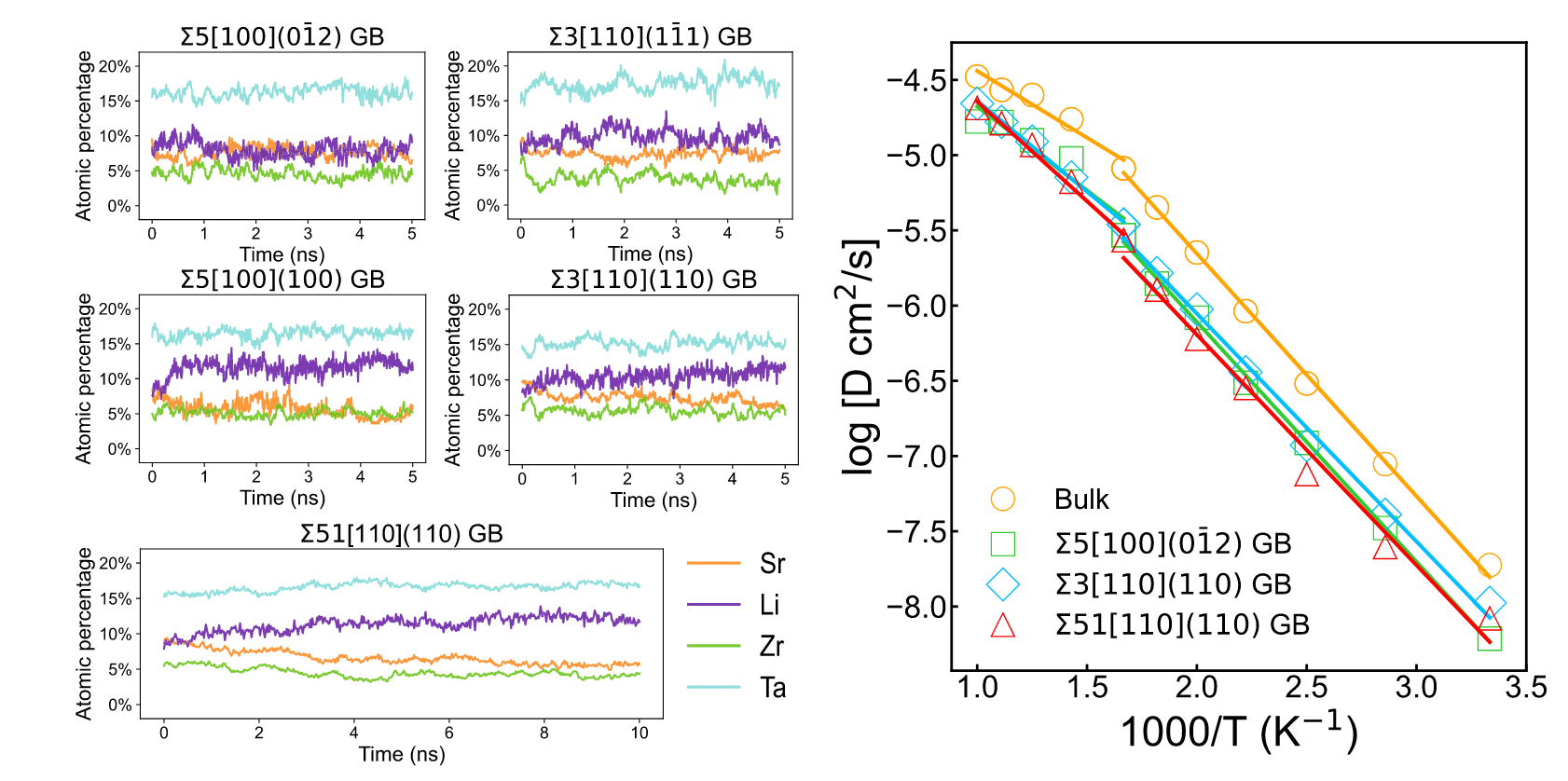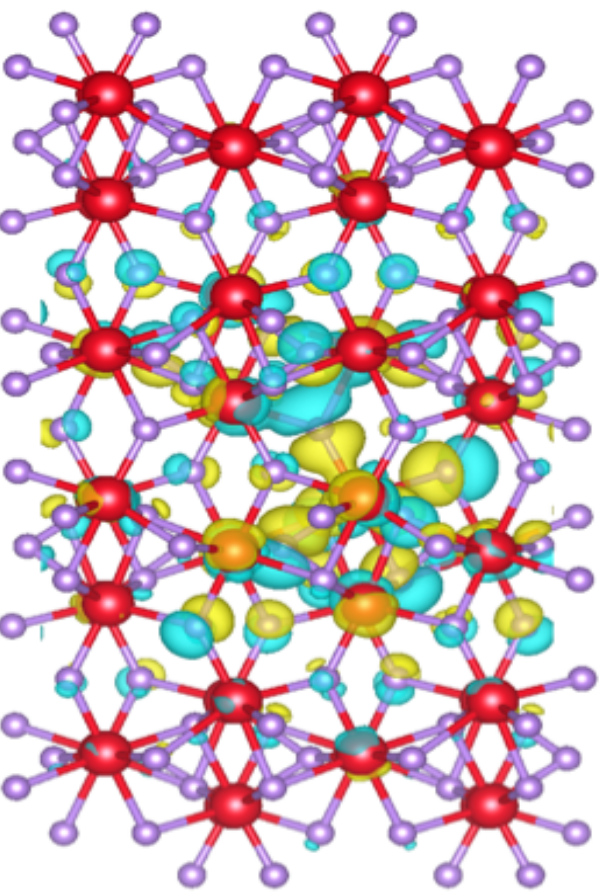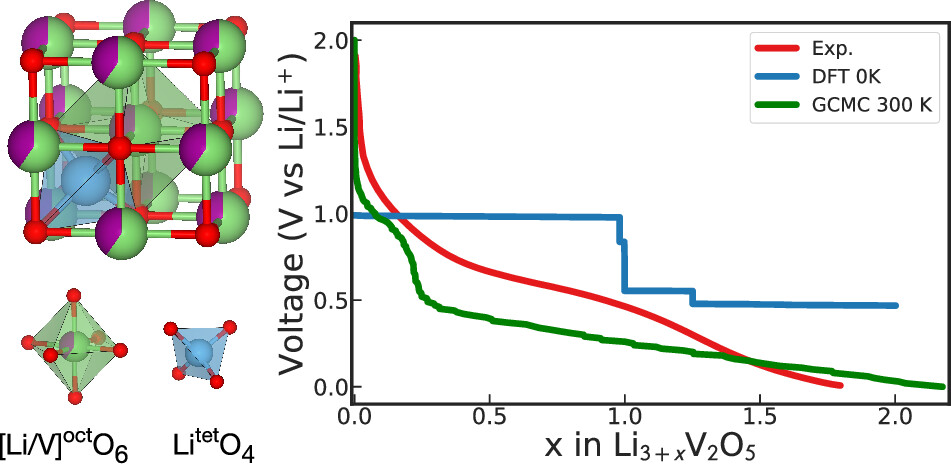Li diffusivity at the grain boundaries
Randy’s work on “Lithium dynamics at grain boundaries of β-Li3PS4 solid electrolyte” has just been published in Energy Advances! Randy was a visiting scientist in the Materials Virtual Lab from NIMS Japan in 2021-2023. Lithium diffusivity at the grain boundaries of solid electrolytes (SEs) can strongly impact the final performance of all-solid-state Li ion batteries (SSLBs). In this study, we systematically investigate the Li ion transport in tilt and twist GBs as well as amorphous/crystal interfaces of β-Li3PS4 by performing large-scale molecular dynamics (MD) simulations with a highly accurate moment tensor interatomic potential (MTP). We find that the Li ion conductivities at the GBs and amorphous/crystal interfaces are 1–2 orders of magnitude higher than that in the bulk crystal. The Li pathway network in twist GBs and amorphous/crystal interfaces comprises persisting large Li ring sub-networks that closely resemble those found in the bulk amorphous structure, whereas more smaller and short-lived Li ring sub-networks are detected in tilt GBs and the bulk crystal. The concentration of persisting large Li ring sub-networks in the GB and amorphous/crystal interfaces is directly proportional to the degree of Li site disordering which in turn correlates with GB conductivity. Our findings provide useful insights that can […]

